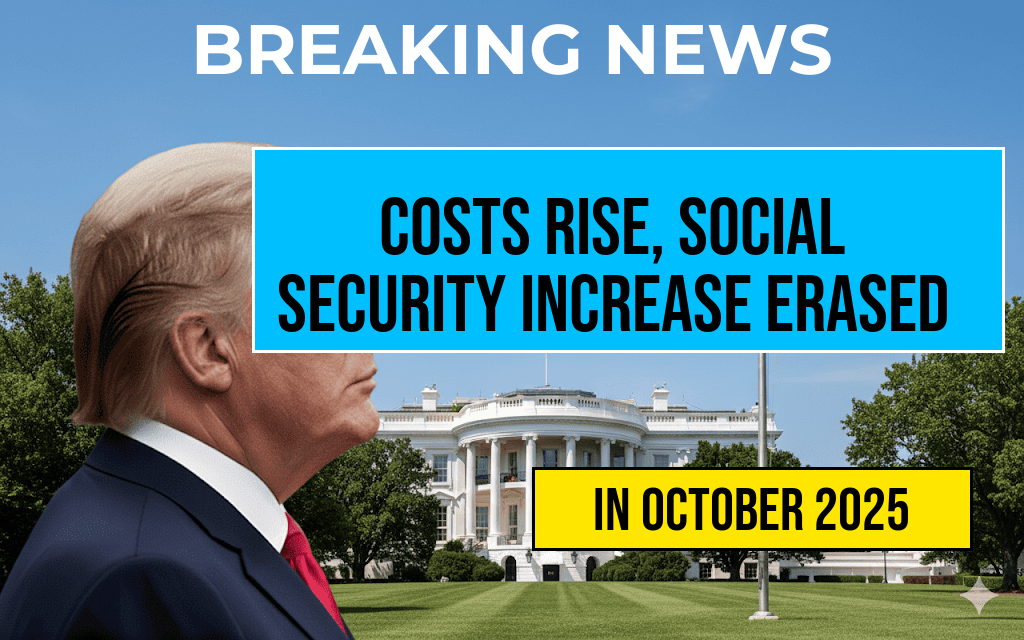American consumers are feeling the squeeze as recent economic data reveals a 3.1 percent increase in the core Consumer Price Index (CPI), a measure that excludes volatile food and energy prices. This uptick erodes the $49 monthly Social Security increase announced earlier in the year, complicating retirement planning for millions. The inflationary pressure is driven by rising costs across multiple sectors, including housing, transportation, and healthcare, which collectively outpace the modest benefit adjustment. With inflation remaining persistent, many seniors and fixed-income households face ongoing financial challenges, prompting discussions about the adequacy of Social Security adjustments amid a resilient economy.
Economic Indicators Signal Persistent Inflationary Trends
Core CPI Rises Steadily Amid Broader Price Pressures
The latest report from the U.S. Bureau of Labor Statistics indicates that the core CPI increased by 3.1% over the past year, marking a notable acceleration from previous months. Unlike the headline CPI, which includes food and energy prices, the core measure provides a clearer picture of underlying inflation trends. The increase suggests that inflationary pressures are broad-based, impacting essential goods and services, and could influence Federal Reserve monetary policy decisions in the coming months.
Impact on Social Security Benefits
Earlier this year, the Social Security Administration announced a $49 monthly increase for beneficiaries, reflecting the annual cost-of-living adjustment (COLA). However, with inflation running higher than anticipated, the real value of this boost diminishes. Seniors relying on Social Security are witnessing their purchasing power decline, as rising prices offset the benefits of the COLA. This phenomenon underscores concerns that current adjustments may not fully compensate for inflation’s impact, especially as healthcare and housing costs continue to escalate.
Rising Costs Across Key Sectors
| Sector | Recent Change | Implications |
|---|---|---|
| Housing | Up 4.2% | Higher rent and mortgage rates strain household budgets |
| Transportation | Up 3.8% | Fuel prices and vehicle maintenance costs rise |
| Healthcare | Up 2.9% | Medical services and prescription drugs becoming more expensive |
| Food | Up 2.5% | Groceries cost more, impacting lower-income families |
Policy Responses and Economic Outlook
Federal Reserve’s Approach to Inflation
The Federal Reserve has signaled its intention to continue raising interest rates to combat inflation, aiming to temper demand and stabilize prices. However, aggressive rate hikes risk slowing economic growth and increasing borrowing costs for consumers and businesses alike. Analysts observe that the central bank faces a delicate balancing act: curb inflation without precipitating a recession.
Potential Adjustments to Social Security
Advocates and policymakers are debating whether future COLAs should be more closely tied to inflation metrics or include additional adjustments to better protect beneficiaries. Some suggest a more dynamic approach that considers real-world spending patterns, especially in sectors where costs are rising faster than average.
Public Response and Financial Planning Considerations
Senior Community and Advocacy Groups
- Many seniors express concern that the current COLA does not suffice to meet rising healthcare and housing costs.
- Organizations are urging lawmakers to consider permanent reforms to improve Social Security’s resilience against inflation.
Financial Planning Tips for Beneficiaries
- Review and adjust budgets regularly to accommodate increasing expenses.
- Explore additional income sources or benefits, such as part-time work or Medicare adjustments.
- Consult financial advisors to develop strategies that maximize benefits and minimize inflation impacts.
Looking Ahead
With inflation persisting at elevated levels, the gap between rising costs and fixed-income benefits is widening. While policymakers grapple with balancing inflation control and economic growth, beneficiaries are advised to remain vigilant and proactive in managing their financial health. As inflationary pressures continue to shape the economic landscape, the adequacy of Social Security adjustments remains a critical issue for millions of Americans.
For more information on inflation trends and Social Security policies, visit Wikipedia’s CPI overview and Forbes’ analysis on inflation and Social Security.
Frequently Asked Questions
What is the main reason for the surge in consumer costs?
The surge in consumer costs is primarily driven by a 3.1 percent increase in the Core CPI, which measures inflation excluding volatile food and energy prices.
How does the Core CPI impact Social Security benefits?
The Core CPI influences the annual Social Security cost-of-living adjustment (COLA). In this case, the 3.1 percent rise has eroded the $49 increase, effectively reducing the purchasing power of benefits.
Why does the Social Security increase feel insufficient this year?
Despite a $49 boost, the cost of living has increased at a faster rate due to inflation, leaving beneficiaries with less real income to cover rising expenses.
What factors contributed to the inflation surge in the recent report?
The inflation surge is attributed to various factors, including increased prices for housing, transportation, and goods, which are reflected in the rising Core CPI.
What can Social Security recipients expect in the future regarding benefit adjustments?
Future benefit adjustments will depend on the ongoing inflation rates. If inflation remains high, COLAs may increase, but if inflation subsides, benefits may not keep pace with cost of living.






